What communications are needed for a dryer?
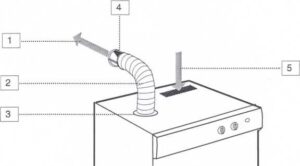 Before purchasing any household appliance, it is advisable to find out what communications are necessary for its full functioning, because if something is missing, then there is no point in buying the unit. And even if all communications are available, you need to carefully consider where to place the new equipment. Let's find out what communications are needed for the drying machine, and consider what other features exist for installing these units.
Before purchasing any household appliance, it is advisable to find out what communications are necessary for its full functioning, because if something is missing, then there is no point in buying the unit. And even if all communications are available, you need to carefully consider where to place the new equipment. Let's find out what communications are needed for the drying machine, and consider what other features exist for installing these units.
Communications for the dryer
It’s worth saying right away that absolutely all dryers need access to an electrical outlet. As for the connection with the sewer system and ventilation, then everything depends on the specific unit. Some models need this, others don't.
Ventilation-type dryers remove moisture from the chamber through a pipe directly to the street. Such a unit is only allowed to be kept in a private home. The only advantage of this type of dryer is its low cost. Otherwise, it is unlikely that anyone will like it: it is difficult to use, suitable for use only in mild climates, and it is extremely difficult to come up with a suitable installation location.
Ventilation is provided quite simply. There is a special ventilation hole in the body of the machine with a soft air duct attached to it. The dryer comes with a special clamp that connects the pipe to the hole. The opposite end of the pipe goes either into the ventilation, or, if there is no ventilation, straight into the window.
Important! To ensure that the exhaust duct works properly, avoid bending the pipe more than 90 degrees.The fewer twists and turns, the stronger the traction.
Another installation problem is the room temperature. If the room where you plan to place the dryer often has a high temperature, it is better not to run the air duct along the top. If you do this, condensed moisture will accumulate in the pipe, which will create a serious obstacle to the escape of air. In such cases, it is recommended to make an additional hole in the wall at the level of the corrugated pipe so that it horizontally connects the ventilation hole in the dryer and in the wall.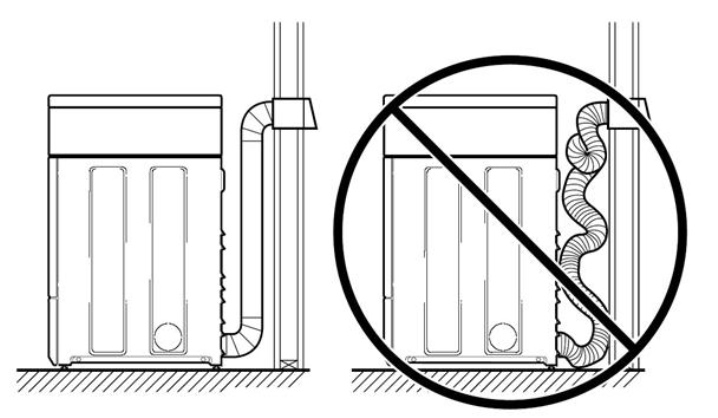
It seems that dryers of this type are some kind of last century, nothing but inconvenience. By and large, this is the case; on the modern Russian market of household appliances it is almost impossible to find such specimens. Most modern dryers are of the condensing type. This means that wet items are treated with hot air. The exhaust hot, humid air is pumped into the cooling chamber. There the water condenses and goes into a special container or into the sewer. Some people prefer to drain the tray manually each time so as not to be tied to communications, while others find it easier to connect the unit to the sewer. This is possible due to a special hole in the machine body, which is connected to the sewer pipe through a regular hose.
The mechanism for connecting such a machine to the sewer is similar to the mechanism for connecting a washing machine to the sewer. Accordingly, if you decide to use this method, your SM will need access to both the electrical network and the sewer system.
Today, the most advanced and efficient dryers are those with a heat pump.There is no heating element used here, as in the previous case. The temperature difference is ensured by a built-in refrigeration unit. Due to the almost complete absence of heat loss, such machines are very energy efficient, and they can be installed in almost any room, because for the full operation of such a dryer, one outlet is enough. Users are happy to use this advantage and install heat pump dryers not only in the bathroom or kitchen, but also in the hallway and even on the balcony, only if there is a modern double-glazed window. Excess moisture can cause corrosion inside the drum.
Where to put the dryer?
There are a decent number of ways to install a drying unit in a residential area. The user can choose one of the following mounting options:
- place vertically on top of the washing machine;
- place horizontally in one row with the washing machine;
- place inside a cabinet or in a niche made of plasterboard;
- place under the kitchen countertop.
For small rooms, where every meter counts, and where it is necessary to take into account the presence of nearby communications, the best installation option is to place it on top of the washing machine.
Attention! To place a dryer on top of a washing machine, you need to use a special set of fastening tools and parts that come with dryers; for example, ready-made stands are often sold that allow you to place certain models of dryers on top of the washing machine.
When planning to install a dryer on a washing machine, it is better to give preference to models of the same brand.As a rule, they match in parameters and dimensions, so there will be no problems with mounting fasteners. Well, a purely aesthetic point - such a homogeneous composition will fit into the interior much better.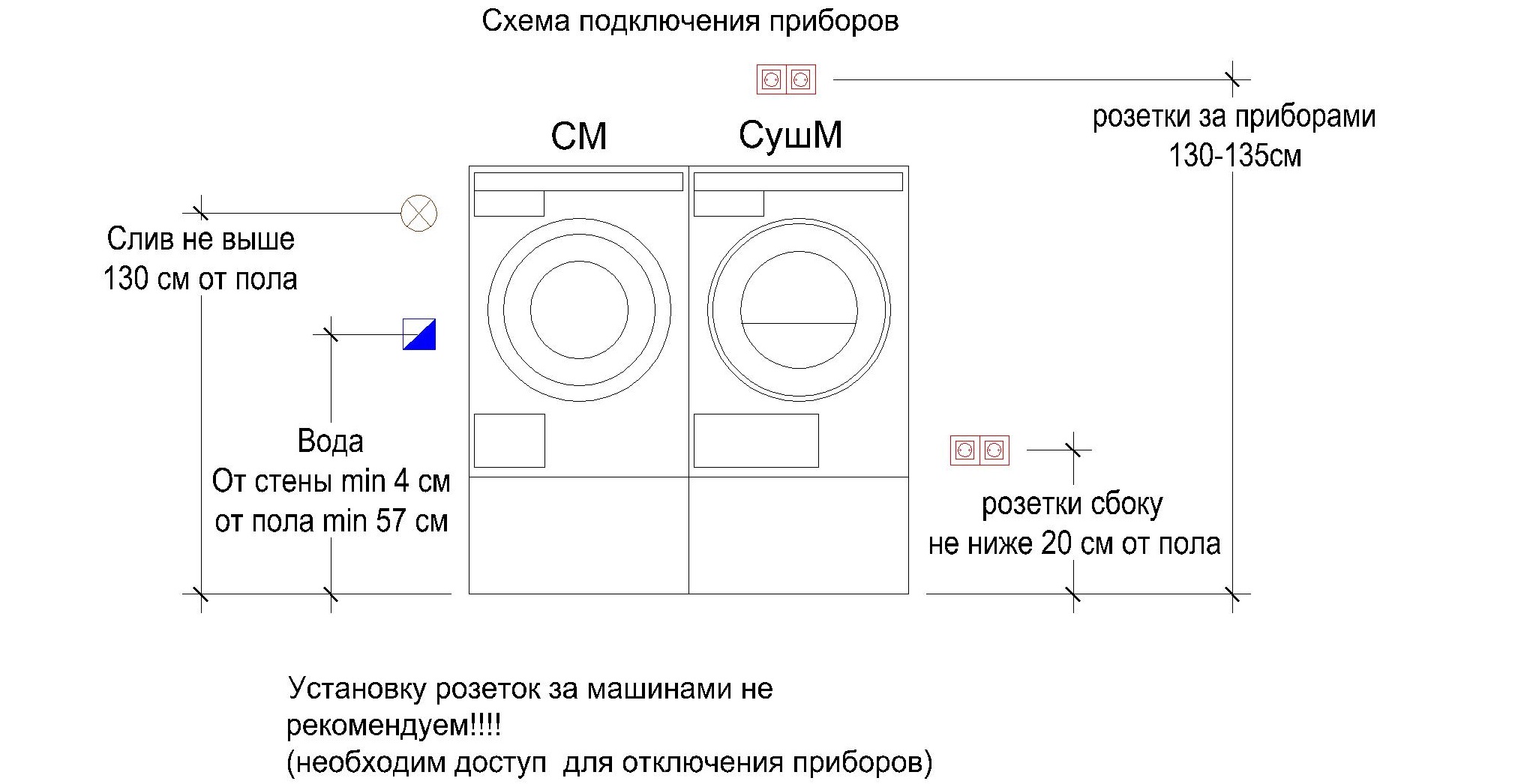
If you were unable to purchase a dryer from the same series as SM, then you need to look for models from other brands that are as close as possible in depth and width. A dryer can be a little smaller than a washing machine, but never larger. After all, then the entire column will be in a very unstable position and sooner or later will collapse. It is also impossible to place a washing machine on top of a dryer, since SMs weigh more and vibrate more, and the dryer will not withstand such a load from above. How to install?
- Attach the fasteners to the top panel of the washing machine. They are something like anti-tip frames with special caps.
- Secure the dryer body to the recesses of the caps.
- Adjust the unit to the level by unscrewing the legs.
For safety reasons, you must first use the SM and then the washing machine, or vice versa if necessary, but never at the same time, this will be too strong a load for the column.
As for the in-line installation method, it is, of course, the simplest. The only difficulty is the need to find enough free space next to the washing machine. But it will pay off, since each unit will be stable and protected from the influence of the other. This method is often used by residents of private spacious houses or apartment owners where there is either a special inventory room or a bathroom of sufficient size. In this case, the entire installation comes down to just installing the dryer on the floor and leveling it using the same unscrewing of the legs. Then you just need to connect the unit to communications, and that’s it, the installation is completed.
If you are at the initial stage of renovation, you can pre-construct a place for drying and washing equipment or for a column of them. A plasterboard niche will perfectly complement the interior, although this option is more difficult to implement than the previous two.
Finally, the last possible installation option is under the countertop or under the sink. This will save as much space as possible, while at the same time hiding the type of equipment from prying eyes with a kitchen set. If it is possible to implement this method, many choose it, especially with the condensation type of drying, when the proximity of the sewer plays a decisive role.
Interesting:
Reader comments
- Share your opinion - leave a comment
Categories
Washing machine repair


For buyers

For users

Dishwasher


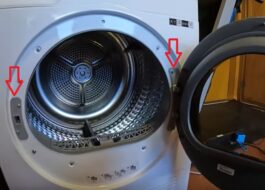

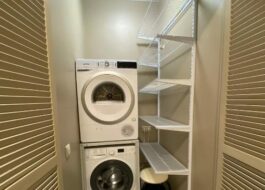












Add a comment